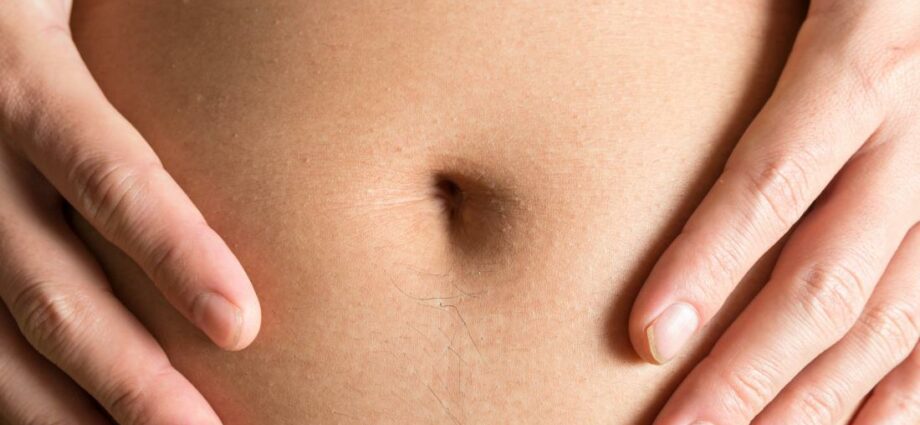Contents
The navel, also known by the term umbilicus (from Latin umbilicus), is the scar left by the fall of the umbilical cord, at the level of the lower abdomen.
Navel structure. The navel, or umbilicus, is a fibrous scar that appears following the fall of the umbilical cord, an organ that links the placenta of the pregnant mother to the embryo and then to the fetus.
Structure of the white line of the abdomen. Fibrous structure, the white line corresponds to the midline of the abdomen, formed in particular by the navel.
Place of exchange during pregnancy. The umbilical cord makes it possible in particular to supply the unborn baby with oxygen and nutrients as well as to evacuate waste and carbon dioxide from the baby’s body.
Formation of the navel during the fall of the umbilical cord. At birth, the umbilical cord, which is no longer needed by the baby, is cut. A few centimeters of the umbilical cord remains attached to the baby for five to eight days before loosening and drying out (1). The healing phenomenon begins and reveals the shape of the navel.
Umbilical hernia. It takes the form of a lump in the navel and is formed by the exit of part of the contents of the abdomen (intestines, fat, etc.) through the navel (2).
- In children, it most often appears in the first months after birth. It is usually benign and ends up spontaneously closing.
- In adults, it is linked to a weakness of the tissues of the white line, the causes of which can in particular be a congenital malformation, obesity or the carrying of heavy loads. It is necessary to treat it to avoid strangulation of the intestines.
Laparoschisis and omphalocele. These two rare congenital malformations3,4 are manifested by incomplete closure or absence of the abdominal wall, respectively. They require medical care from birth (5).
Omphalite. It corresponds to a bacterial infection of the umbilicus caused by poor disinfection of the umbilical area in newborns (5).
Intertrigo. This skin condition occurs in the skin folds (armpits, navel, between fingers and toes, etc.).
Abdominal pain and cramps. Frequent, they can have different causes. In the umbilical area, they are often associated with the intestines and to a lesser extent with the stomach or pancreas.
Appendicitis. It manifests as severe pain near the navel and needs to be treated quickly. It results from inflammation of the appendix, a small growth in the large intestine.
Local skin treatments. In case of infection with bacteria or fungi, the application of antiseptic or antifungal ointments will be necessary.
Drug treatments. Depending on the causes of abdominal pain and cramps, antispasmodics or laxatives may be prescribed. Herbal or homeopathic treatments can also be applied in some cases.
Surgical treatment. In the case of umbilical hernia in adults, appendicitis, more serious congenital malformations in children, surgery will be implemented. In the case of very large hernias, an omphalectomy (removal of the olombic acid) may be performed.
Physical examination. Navel pain is first assessed by clinical examination.
Medical imaging exams. Abdominal CT scan, parietal ultrasound, or even MRI can be used to complete the diagnosis.
Laparoscopy. This examination consists of the insertion of an instrument (laporoscope), coupled to a light source, through a small opening made under the navel. This exam allows you to visualize the inside of the abdomen.
Navel-gazing. The navel is often associated with egocentricity as for example in the expressions “looking at the navel” (6) or “being the navel of the world” (7).










